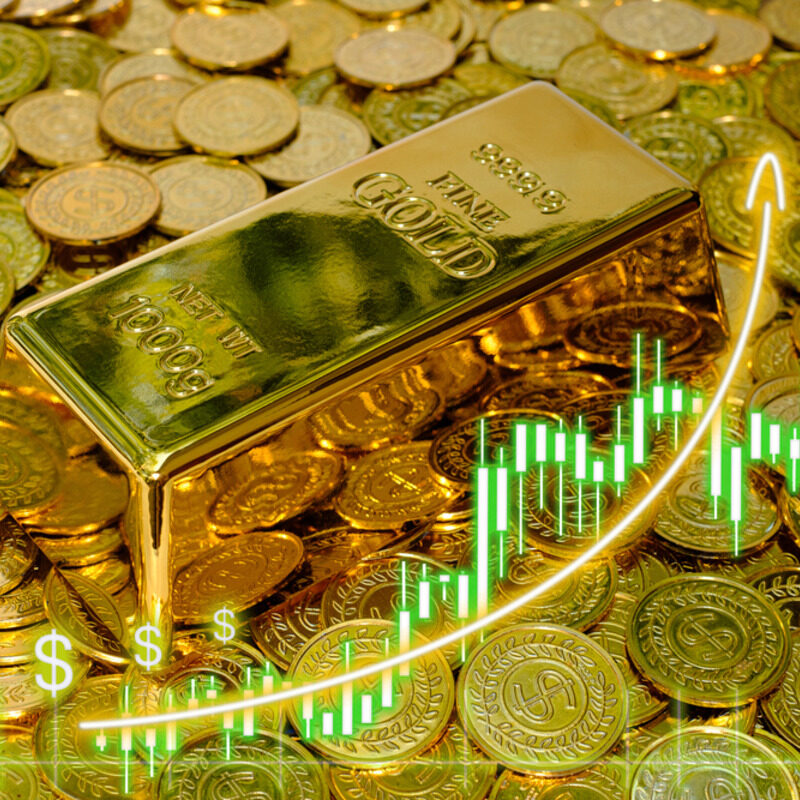Metal Markets

UAE gold prices fall to AED480.25, global rates retreat amid strong dollar and Fed uncertainty

Gold prices saw a mild decline on Tuesday as the U.S. dollar maintained strength near three-month highs, and investors reacted to mixed signals from the Federal Reserve regarding future interest rate cuts. After reaching historic highs above $4,300 per ounce in October, gold settled back below the $4,000 mark, reflecting a market correction following a remarkable rally earlier this year.
In the UAE, gold rates experienced a slight decline. The price of 24-carat gold decreased by AED3.50, bringing it to AED480.25. Similarly, 22-carat gold fell by AED3.25, now priced at AED444.75. Additionally, 21-carat gold dropped AED3.00 to AED426.50, while 18-carat gold also saw a reduction of AED3.00, settling at AED365.25.
Spot gold declined by approximately 0.55 percent on Tuesday, trading at around $3,979.47 per ounce, while U.S. gold futures for December delivery dropped 0.57 percent to about $3,990.55 per ounce. This downward adjustment came after the metal’s rapid ascent, with year-to-date gains over 55 percent, propelled by heavy demand from institutions and retail investors seeking safe-haven assets amid ongoing economic uncertainties and geopolitical tensions.
In India, one of the world’s largest gold consumers, prices for 24K gold slipped slightly to INR12,246 per gram, while 22K and 18K gold were priced at INR11,225 and INR9,184 per gram, respectively. Despite the minor dip, demand remained supported by the festive and wedding seasons, keeping the market relatively stable against the backdrop of subdued international momentum.
U.S. dollar resilience
The U.S. dollar’s resilience is a central factor influencing the recent gold price trend. Following two interest rate cuts by the Federal Reserve earlier in the year, markets widely expected further easing to continue. However, Federal Reserve Chair Jerome Powell recently indicated that another rate cut during December is “not a foregone conclusion,” causing market participants to adjust expectations. The probability of an additional rate cut in December has dropped to around 65 percent, down from over 90 percent just before Powell’s remarks.
A stronger dollar typically puts downward pressure on gold prices, as bullion is priced in U.S. dollars, making it more expensive for holders of other currencies. The dollar’s rally against major currencies like the euro has contributed to gold’s retreat from its October peak of $4,381.21.
Rapid bull run
October 2025 marked a period of unprecedented volatility and record-breaking prices for gold. The metal’s climb from around $2,000 per ounce to over $4,300 in about 18 months is one of the fastest bull runs observed, supported not only by retail investors but also by significant central bank purchases globally, reflecting a diversified geographic demand.
The recent price correction of nearly 10 percent from the peak is interpreted as profit-taking rather than a sign of fundamental weakness. Analysts underline the strong technical support levels that continue to hold, suggesting bullish momentum remains intact for the medium term.
However, the interplay with the U.S. dollar and Fed policy will be crucial in the near future. Many experts are watching the U.S. Dollar Index, which recently broke monthly highs around 99.4, approaching the key 100 level. A sustained rally in the index could intensify bearish pressure on gold, especially if the Fed signals a more hawkish stance.












